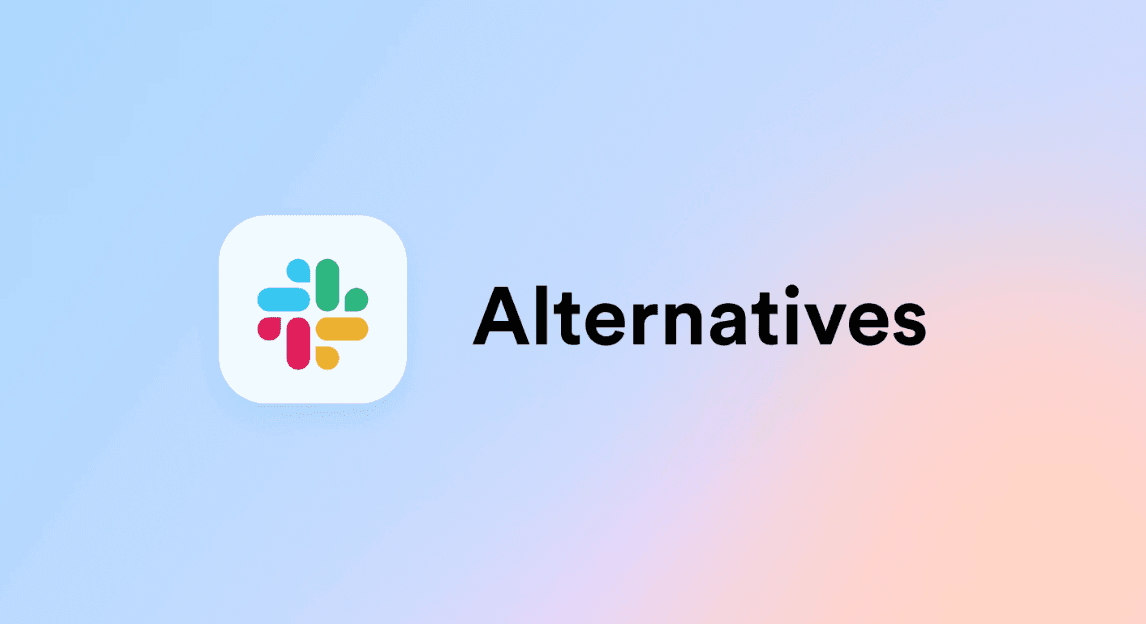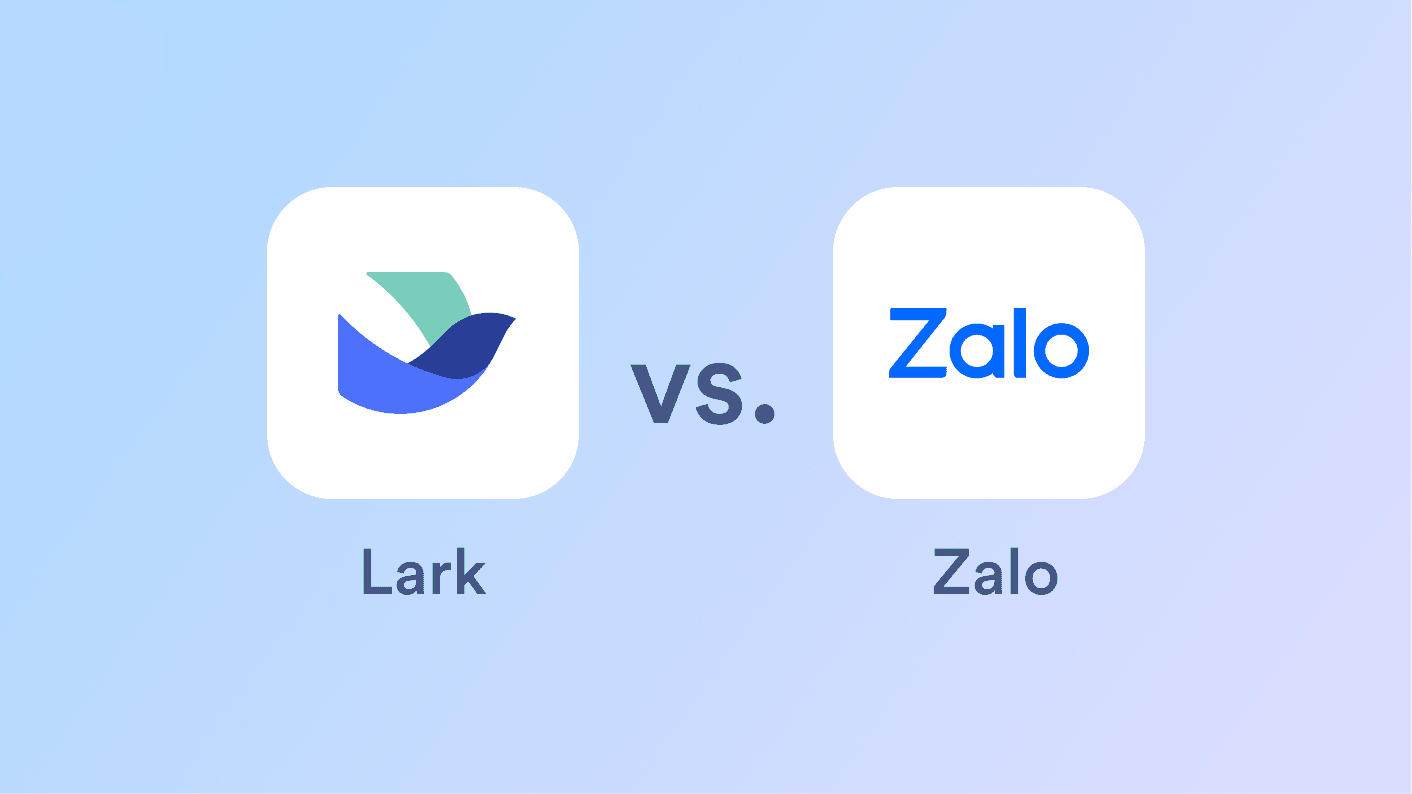Looking for Slack alternatives? We’re here to help.
Slack is a popular tool for team communication, offering channels for messaging, file sharing, and integrations with other apps. However, it’s not the perfect fit for every team. Just because Slack is a widely recognized tool doesn't mean it’s the best option for every business.
A heavy reliance on third-party tools, a lack of built-in project management features, and an overwhelming number of notifications are just a few reasons why teams are seeking new solutions.
In this guide, we’ll explore the top alternatives to Slack in 2025 to help you find the ideal collaboration tool for your business.
Slack: Breakdown and review
Slack is designed for seamless business communication and collaboration. Imagine a digital space where discussions flow, decisions are made, and information is always within reach. Tailored for businesses of all sizes, it serves as a communication hub where teams can share ideas and drive projects forward.

Source: Slack.com
Slack features
Here’s a list of features that make Slack an ideal choice for some businesses:
Channels: Slack channels are focused project spaces facilitating a shared perspective on ongoing work. They ensure everyone is in sync and provide a seamless avenue for live voice conversations via Slack Huddles.
Pinning messages and documents: Pinning messages or documents to channels enhances visibility around priorities. Moreover, integrations with file management platforms like Google Drive and Dropbox Paper streamline document tracking and sharing.
Shared channels across workspaces: Collaborate within your organization and with external entities, establishing a direct communication line across different Slack workspaces.
Customization and navigation: Slack offers a range of customization options for a tailored user experience, from managing sidebar preferences to quick navigation between channels using keyboard shortcuts.
Integrations and workflow builder: Slack provides a wide range of apps and integrations, allowing it to connect with other services and extend its functionality. The Workflow Builder feature enables the creation of automated workflows, enhancing process efficiency.
Why businesses search for Slack alternatives
While Slack is a well-known team communication platform, is it the perfect solution for your team conversations? Here are some common issues with Slack that we and G2 users have discovered.
Onboarding is confusing
Users complain that Slack makes it hard to onboard new users unfamiliar with the platform.
As one review explains, “It was difficult learning and figuring everything out at first. I had to look up some tutorials, so the onboarding process could've been a bit nicer. It took a while for me to figure out which integrations I needed and getting them all setup.”
Another says, “It can be complicated to get started and understand the basics of how slack works.”
Too many notifications
Ever noticed how that Slack notification can pull you away from a great idea? You spend so much time responding to those "pings" that it interrupts your daily productivity.
Plus, the confusion between “mention” and “message” push notifications leads to an overwhelming user experience of constant pings and dings.
As one user says, “Slack's notification overload and file management challenges hinder its usability.”
Messages get lost
Users feel overloaded by Slack’s different channels, messages, and threads. They often complain that it feels cluttered. This makes finding a conversation or reply hard, even when you’ve had a notification.
As one user explains: “[It’s] confusing and often leads you to waste time or miss real notifications.”
As another says: “I regularly miss messages. Checking it has become a source of stress. There is no easy to use notification system!”
Lack of collaboration tools
Slack is a great messaging app, but it’s missing some key features. For example, it doesn’t offer real-time transcriptions after virtual meetings, built-in translation, or message scheduling for global teams.
Without these tools, you’ll need to rely on third-party apps to add the missing features. While this can work, paying for Slack and then paying for extra tools might not make sense for businesses looking to save money. This is why many are switching to all-in-one solutions that have everything built in.
What to consider when choosing an alternative to Slack
Selecting an alternative to Slack requires carefully evaluating several factors to ensure the new platform aligns with your team’s needs. Here are some criteria to consider:
Centralized workspace: Look for team collaboration tools, not only a communication tool. Collaboration software allows you to communicate, collaborate on projects, and manage documents in one platform. This helps significantly reduce app toggling and context switching, improving employee productivity.
Ease of use: An intuitive user interface with a minimal learning curve will ensure a smooth transition. Switching to a new tool is no easy task, and you can only maximize your investment by having everyone fully utilize the tool for their work needs.
Integration capabilities: The ability to integrate with other business tools is crucial. Often, your business might already use specialty software, such as a POS system or a business intelligence platform.
Cost-effectiveness: Affordability without compromising essential features is key. As your organization grows, you want a tool that can scale with you while maintaining reasonable costs.
Global collaboration: Features like real-time translation, time-zone checking, and meeting recordings are invaluable for teams across different geographies and languages. This helps reduce late meetings, time wasted on translations, and unreasonable schedules while keeping the business moving forward.
12 best Slack alternatives
1. Lark – Best overall Slack alternative
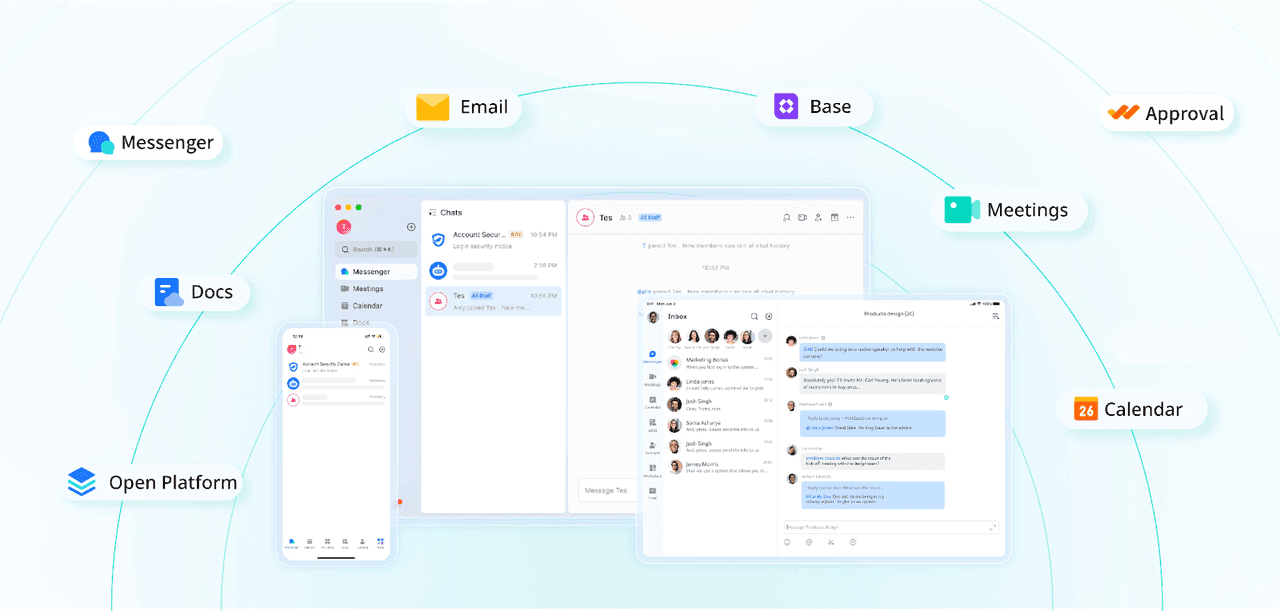
When it comes to productivity and collaboration, you can’t look further than Lark. It offers the same chat feature as Slack, but also a unified platform where all your work tools and resources come together seamlessly.
Top Lark features:
Lark Messenger: Chat privately or in groups, @mention colleagues, send files, add custom bots, and schedule messages for different time zones to enhance communication and collaboration.
Lark Docs: Co-create and edit documents in real time, add comments, @mention teammates, and track updates seamlessly for smooth teamwork.
Lark Meetings: Host audio and video calls, share your screen or documents, and collaborate on an interactive whiteboard. Real-time translation makes global communication effortless.
Lark Calendar: Plan and schedule meetings, view colleagues' availability, and sync changes instantly with all attendees to keep everyone on the same page.
Lark Base: Organize projects, assign tasks, automate workflows, and track progress in real time. Choose from Gantt, Kanban, Gallery, and other views for better project visualization.
Pros of Lark:
All-in-one platform: Combines messaging, video conferencing, document collaboration, project management, and more, reducing the need for multiple apps.
Mobile-Friendly: Optimized for seamless use on both mobile and desktop, allowing teams to stay productive on the go.
Highly Customizable: Lark can automate workflows, create approval flows, and centralize data to fit the unique needs of any business.
Global Collaboration: Overcomes language barriers with real-time translations, making it easy for global teams to work together.
Cons of Lark:
Learning Curve: With so many features, new users may need some time to explore and fully utilize all of Lark’s capabilities.
Pricing:
Lark offers a free plan for up to 20 users, which includes eleven products such as Lark Messenger, Lark Base, Lark Mail, Lark Approval, and more. Paid plans start at $12 per user per month.
User reviews:
G2 rating: 4.6/5

Source: www.g2.com
2. Google Chat – Best for Google Workspace (G Suite) users

Source: workspace.google.com
Google Chat is a great choice for Google Workspace users, offering a unified workflow and a familiar platform for seamless collaboration.
Google Chat features:
Spaces for team collaboration: Similar to channels in Slack, Spaces in Google Chat help keep conversations organized around projects or topics.
Direct messages: Like Slack, Google Chat allows for quick one-on-one or group conversations with teammates within the Google ecosystem and emails. Unlike Slack’s limited plan, chat history is unlimited.
AI-powered suggestions: Unlike Slack, Google Chat combines Google’s AI capabilities for smart suggestions, event summaries, and reminders.
Pros of Google Chat:
Seamless Google Workspace integration for unified workflows
Built-in Google AI features
Robust security and strict data privacy
Easy-to-use interface for users already familiar with other Google services
Unlimited message history
Cons of Google Chat:
Limited third-party integrations compared to Slack's vast app ecosystem
Less customization and fewer advanced features than Slack
Not ideal for large organizations with complex communication needs and intricate workflows
Pricing:
Google Chat is free with any Google account. Google Workspace subscriptions offer additional features through the app library.
User reviews:
Capterra rating: 4.5/5
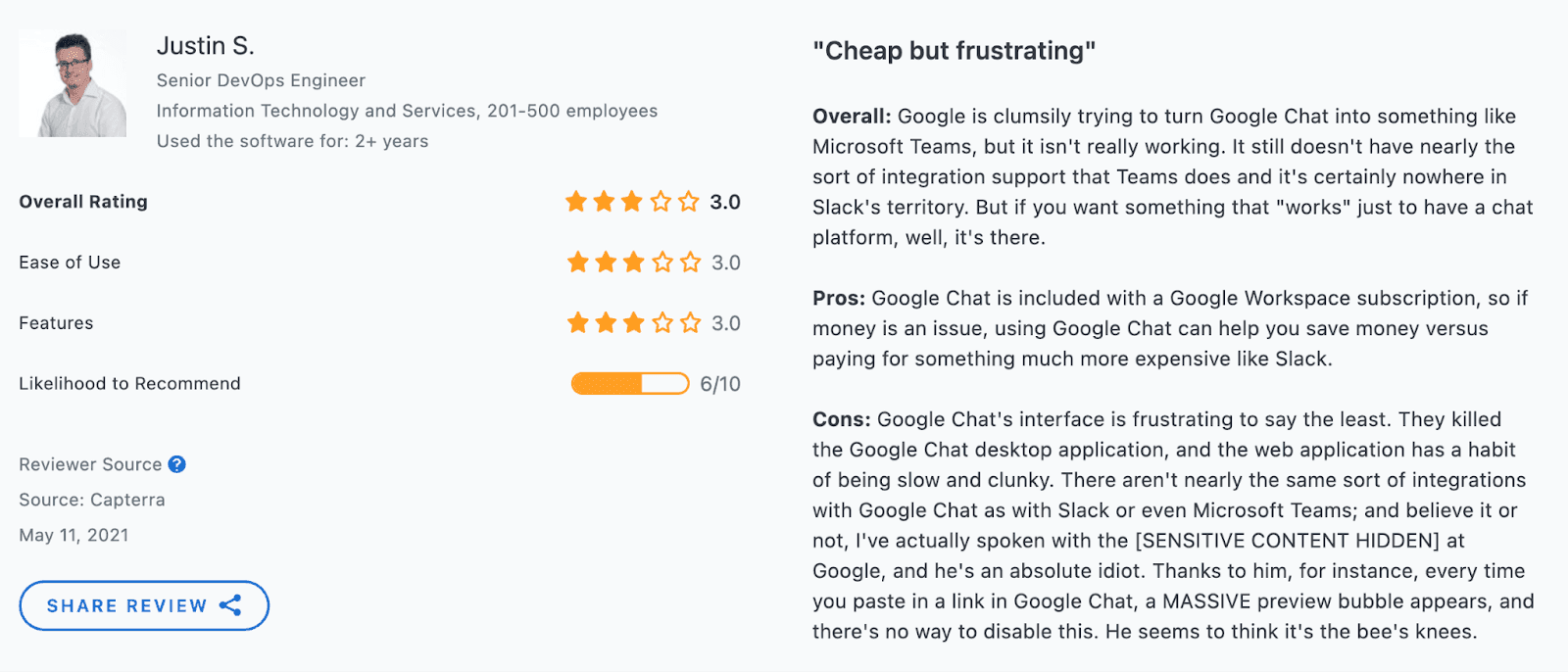
Source: capterra.com
3. WhatsApp Business - Best for customer engagement
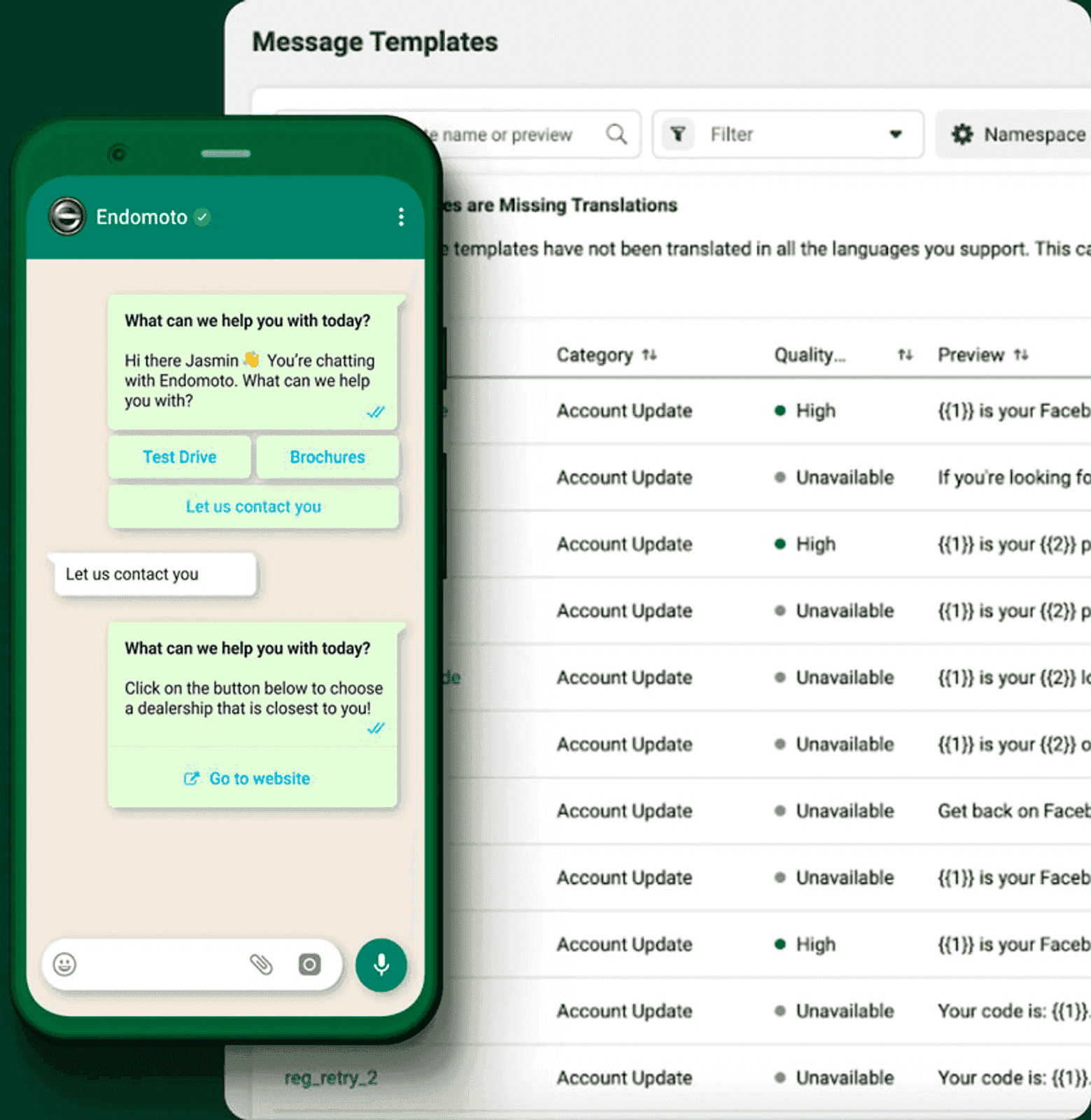
Source: business.whatsapp.com
While commonly used for personal chats, WhatsApp also has a business app beyond personal conversations. Small businesses and local enterprises seeking a free alternative to engage customers can use WhatsApp Business for interactive conversations.
Top WhatsApp Business features:
List your business on WhatsApp: Showcase your business and attract new customers by creating virtual storefronts on WhatsApp. Send automated messages to new customers when they inquire.
Connect and interact with customers: Provide real-time customer support on WhatsApp to address feedback, concerns, and inquiries. Set up quick replies for faster responses.
Offline automated responses: Use greeting or away messages to help customers outside of business hours, attending to their needs.
Pros of WhatsApp Business:
It’s free to use
It’s very user-friendly
Automates customer conversations for faster service
Encrypted and secure
Enables automated communication
Cons of WhatsApp Business:
Lacks important features, like threaded conversations and document collaboration
Limited integrations to streamline workflows
Not designed to handle complex communication flows
Pricing:
WhatsApp Business is free to start. There are also custom pricing options for larger businesses.
User reviews:
G2 rating: 4.6/5

Source: g2.com
Want to learn more about how WhatsApp stacks up against Lark? See Lark vs. WhatsApp
4. Zoho Cliq – Best for Zoho users on a budget

Source: zoho.com
Zoho Cliq is an excellent choice for businesses already using Zoho’s ecosystem. With multi-panel chat, built-in automation, and deep Zoho integration, it streamlines communication and collaboration for small and mid-sized teams.
Top Zoho Cliq features:
Multi-panel chat interface: Unlike Slack, Zoho Cliq allows users to view multiple conversations at once, improving multitasking and workflow efficiency.
Built-in automation: With Zoho’s AI-powered bot, Taz, and custom message actions, teams can automate repetitive tasks directly within the chat.
Seamless Zoho integration: Native compatibility with Zoho CRM, Zoho Projects, and other Zoho apps makes it a perfect choice for existing Zoho users.
Threaded conversations: Keep discussions organized with threaded replies, similar to Slack channels but with deeper context visibility.
Pros of Zoho Cliq:
Affordable pricing compared to Slack
Strong security with end-to-end encryption
Unlimited message history on all plans
Excellent integration with Zoho’s ecosystem
Cons of Zoho Cliq:
Fewer third-party integrations compared to Slack
The interface may feel cluttered for new users
Pricing:
Zoho Cliq offers a free plan with essential features and paid plans starting at $1.80/user/month, making it one of the most budget-friendly Slack alternatives.
User reviews:
G2 rating: 4.4/5

Source: g2.com
5. Telegram – Best for secure, simple communication
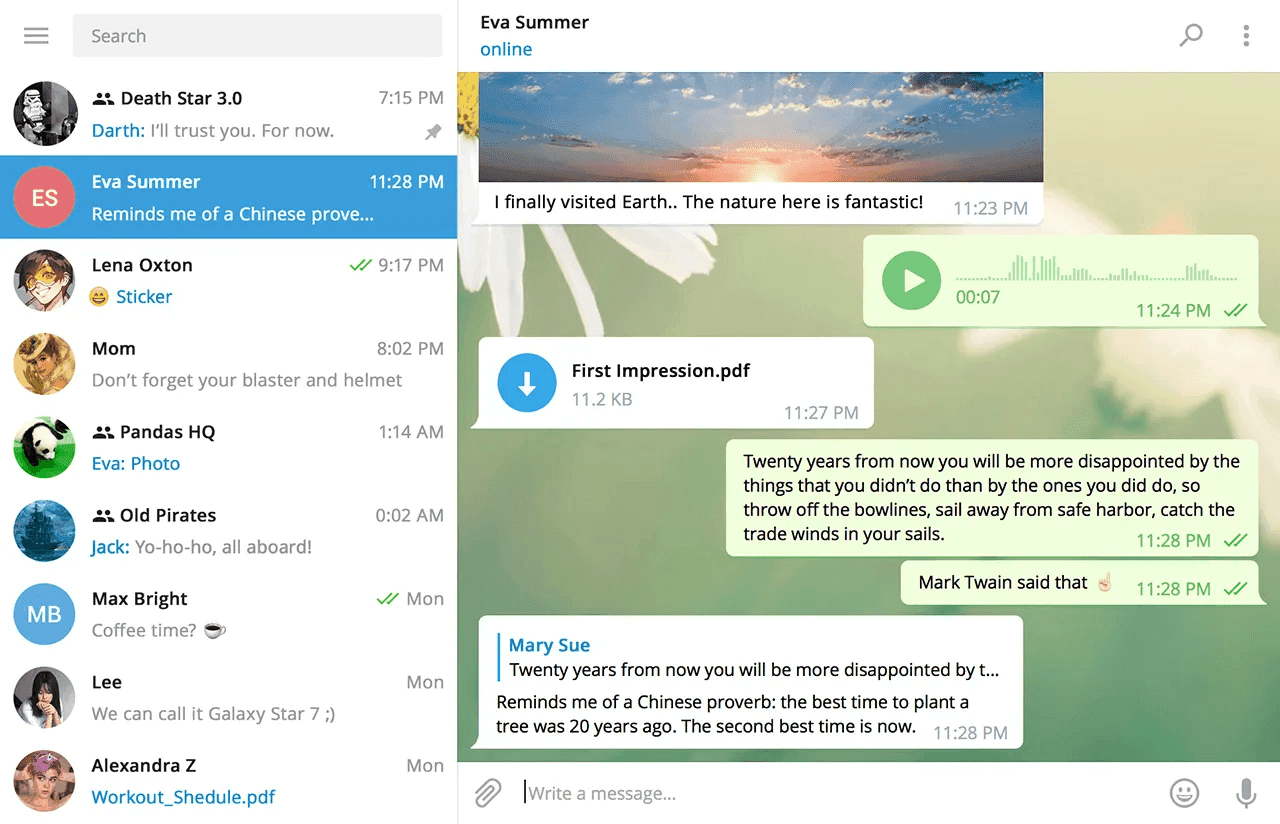
Source: medium.com
Telegram, known for its security and speed, paves its way as a robust alternative to Slack.
It’s especially good for those valuing privacy and encryption in business communications.
Companies and communities emphasizing secure, private communication will find Telegram a compelling alternative to Slack.
A haven for creating secure communities and groups, Telegram has several features that trump Slack.
Top Telegram features:
Secret chats: End-to-end encryption provides secure conversations
Cloud-based: Messages can be seamlessly accessed across different devices, enabling users to access chats from multiple devices
Large Groups: Supports groups with up to 200,000 members
Pros of Telegram:
End-to-end encryption to secure secret chats
Very fast, reliable message delivery
Large groups and channels make it ideal for broadcasting to large communities
It’s open-source and ad-free
Discord bots speed up repetitive communication tasks
Cons of Telegram:
Users complain that the interface is less intuitive than other tools
Limited functionality for complex team chats
Requires a phone number to sign up
Pricing:
Telegram is a free group chat app that promises no ads, subscription fees, or tracking.
User reviews:
Capterra rating: 4.7/5

Source: capterra.co.uk
6. Discord – Best for community development and engagement
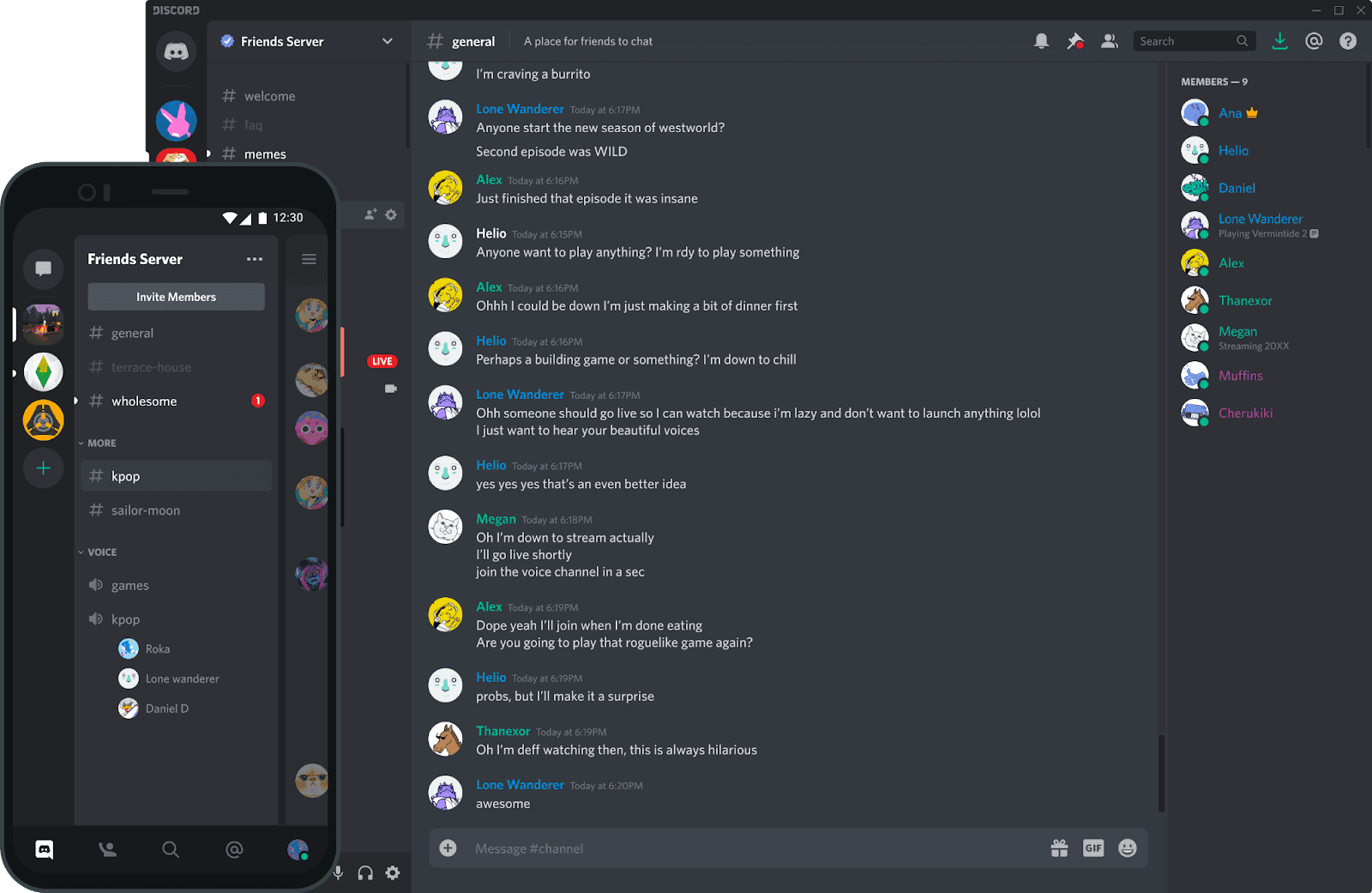
Source: discord.com
Originally designed for gamers, the Discord app has become a popular hub for creating and joining communities.
It serves as a platform for both casual conversations and serious workplace communication.
Its stability and wide range of supported platforms make Discord the preferred communication tool for community enthusiasts.
Companies use Discord to quickly build communities with their fan base. It’s engaging and easy for like-minded customers to join your conversations.
Discord can be used for internal team communication, similar to Slack.
Top Discord features:
Servers: Servers are spaces on Discord created by specific communities and friend groups, and anyone can start a server for free. Some of the most popular servers on Discord include Midjourney (text-to-image AI), Leonardo.AI, Blox Fruits (Roblox games), and more.
Voice channels and video chats: Discord provides real-time voice and built-in video communication tools, replacing Channels and Huddles on Slack. Additionally, Discord offers live streaming functions.
Customizable roles and permissions: Customize access based on your organizational hierarchy to organize your communities flexibly.
Pros of Discord:
Strong community-building and engagement features
Ideal for informal and formal workplace communication
Easy to join and organize voice channels to simplify voice calling
Excellent screen-sharing functionality
Cons of Discord:
Reports of malware in some of the applications
Becomes overwhelming for complex team structures
Its focus on gaming communities might not suit all industry sectors
Pricing:
Discord offers a free version with the option to upgrade to two different Nitro plans, which provide additional quality during streaming, larger uploads, custom emojis, and more.
User reviews:
Capterra rating: 4.7/5

Source: capterra.co.uk
Learn more about Discord and its alternatives.
7. Microsoft Teams – Best for Office collaboration

Source: microsoft.com
If you’re already using Microsoft’s ecosystem, Microsoft Teams is a good alternative to Slack.
You use it as a messaging app and enjoy real-time meetings and calls.
For companies deeply integrated with Microsoft's ecosystem, Teams is a natural choice.
It offers better value with its pricing and includes Microsoft 365 apps in higher-tier subscriptions.
Top Microsoft Teams features:
Integration with Microsoft 365: Seamlessly connect with other products within the Microsoft 365 suite to enhance productivity.
One-on-one and group chats: Easily find and connect with the right contacts within the app through messaging.
Large-scale video conferencing: Host video conferences or live events with hundreds of participants.
Pros of Microsoft Teams:
Easy to learn for teams using the Microsoft ecosystem
Higher-tier bundled pricing makes it cost-effective as you scale
Excellent video conferencing capabilities
Allows teams to structure group conversations around projects
Apps enable teams to collaborate and edit work within Teams
Cons of Microsoft Teams:
The free version significantly limits file storage space and customization features
Interface can feel cluttered and overwhelming
Users report slow load times and notification delays
Pricing:
Pricing starts at $4 per user per month.
User reviews:
G2 rating: 4.3/5
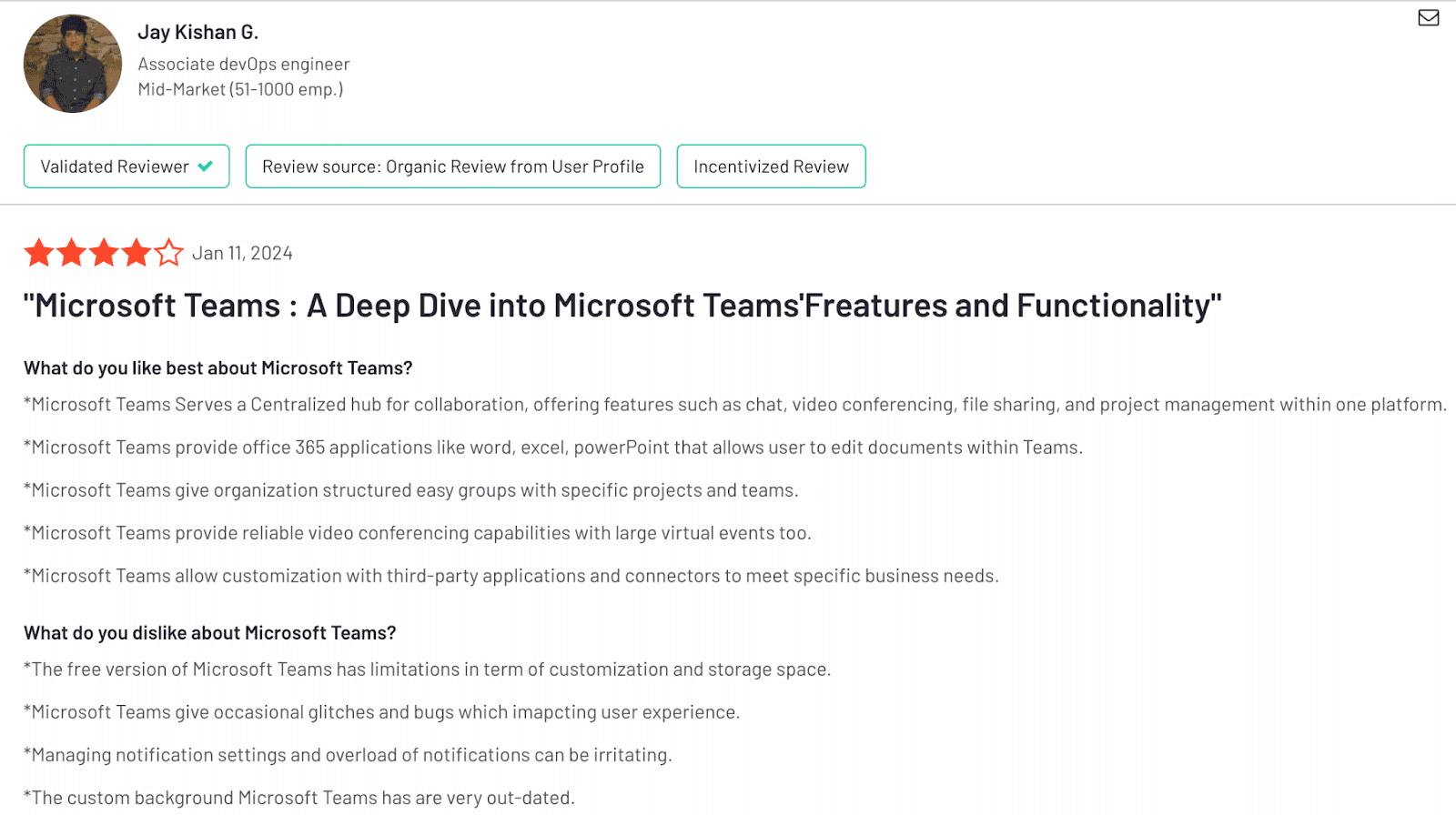
Source: g2.com
8. Rocket.Chat – Best for open-source secure messaging
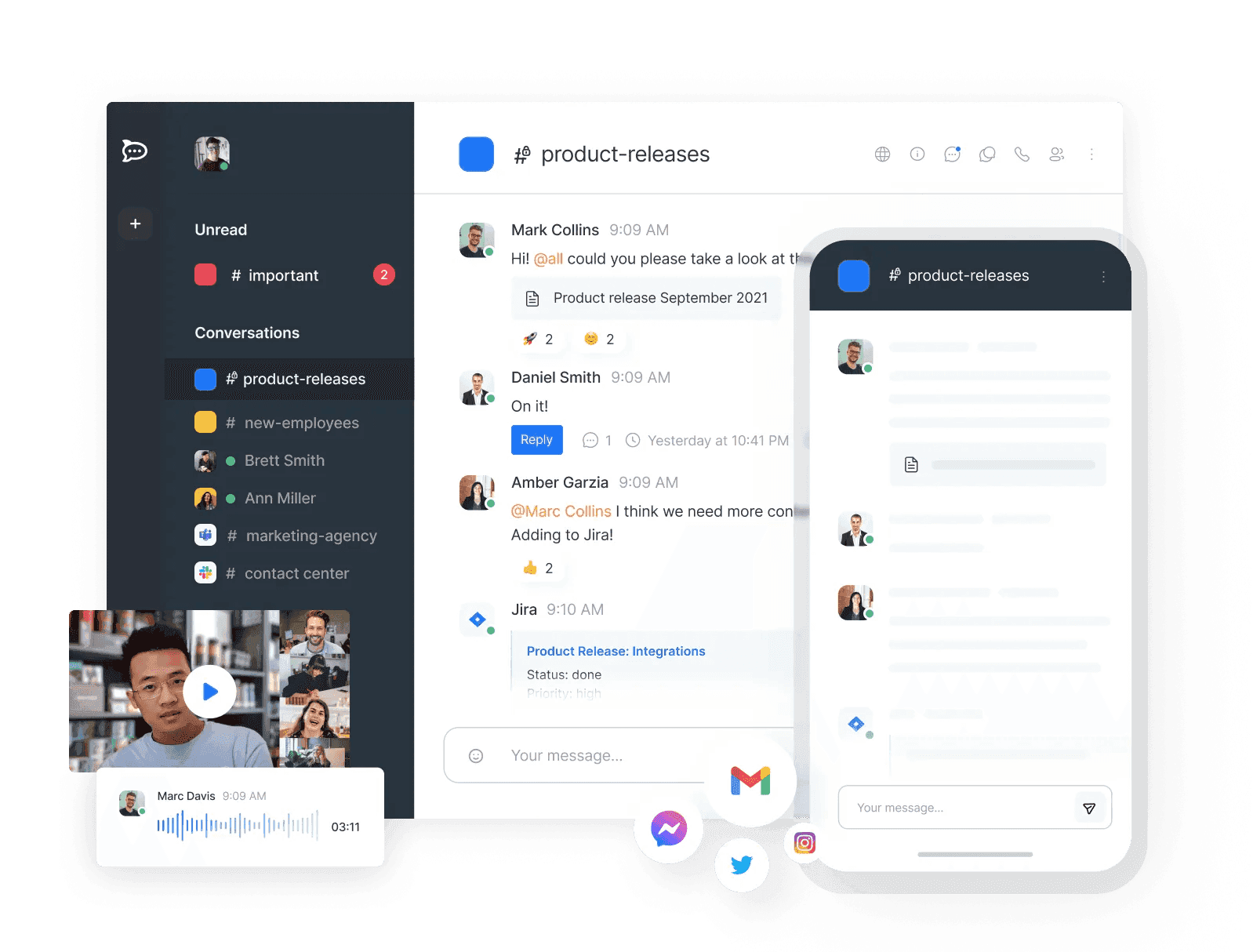
Source: github.com
Rocket.Chat is an open-source alternative to Slack that offers numerous possibilities for organizations interested in self-hosting their communication platforms. It’s especially recognized for its on-premise deployment, a distinct difference from Slack's cloud-centric approach.
Companies with strict data privacy policies or those who prefer on-premise solutions may find Rocket.Chat a more suitable alternative to Slack. It's advantageous for organizations that lean towards open-source solutions, as it allows for customization and control that Slack may not provide.
Top Rocket.Chat features:
Communication and collaboration tools: Rocket.Chat offers real-time messaging, voice messages, calls, and video calls for seamless team communication. It also includes key features like conversation archiving, team inbox, and customization options.
Enhanced security and customization: Rocket.Chat provides advanced security features such as 2-factor authentication, End-to-End encryption, and Single Sign-On (SSO). It also supports self-hosting for better control and privacy.
Self-hosted Solution: Unlike Slack, Rocket.Chat can be self-hosted, ensuring that data stays within your control.
Pros of Rocket.Chat:
Strong emphasis on security for data-focused organizations
Highly customizable and self-hostable
Very intuitive user interface
Unlimited chat history
It’s very affordable
Cons of Rocket.Chat:
Self-hosting requires technical expertise
Users report quirks and bugs in its mobile apps
Smaller community and fewer integrations than some competitors
Pricing:
Rocket.Chat has a free plan and a paid plan that costs less than $5 a month.
User reviews:
G2 rating: 4.2/5
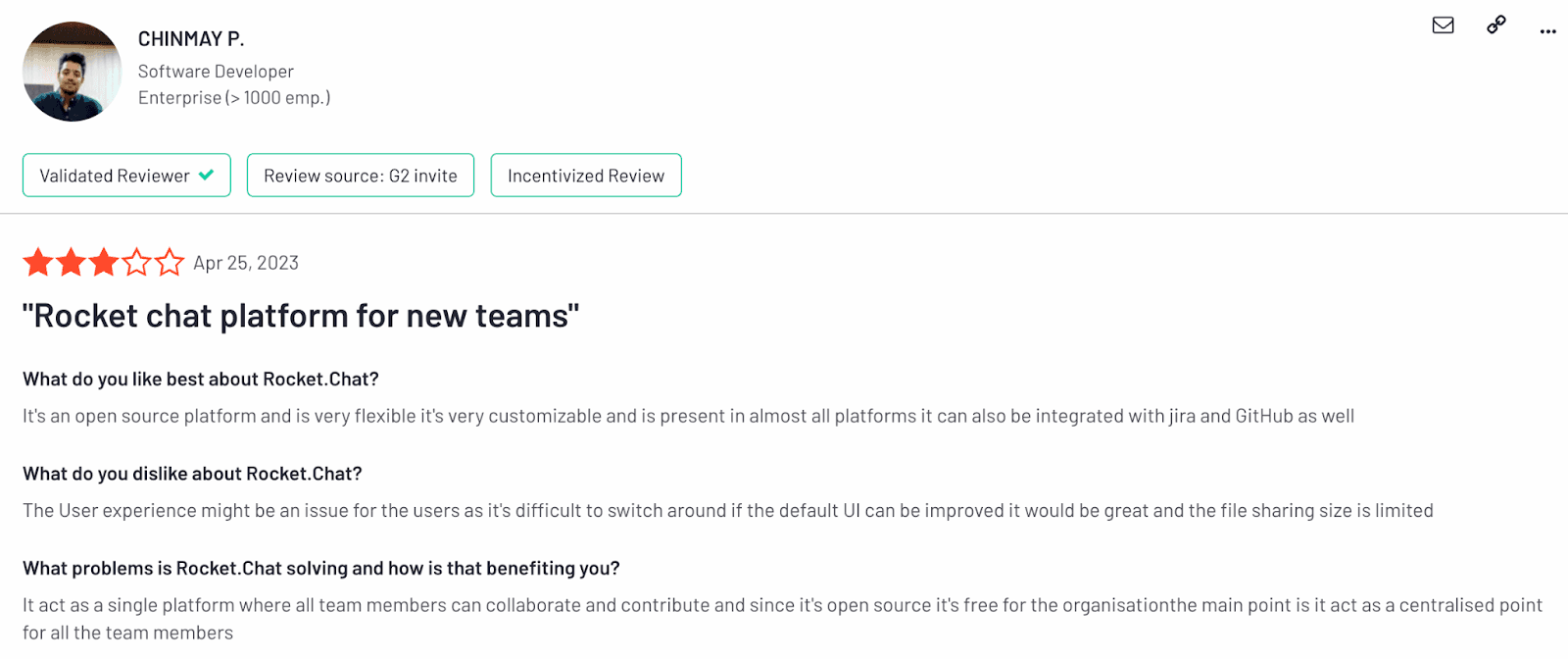
Source: g2.com
9. Pumble – Best for budget-friendly communication
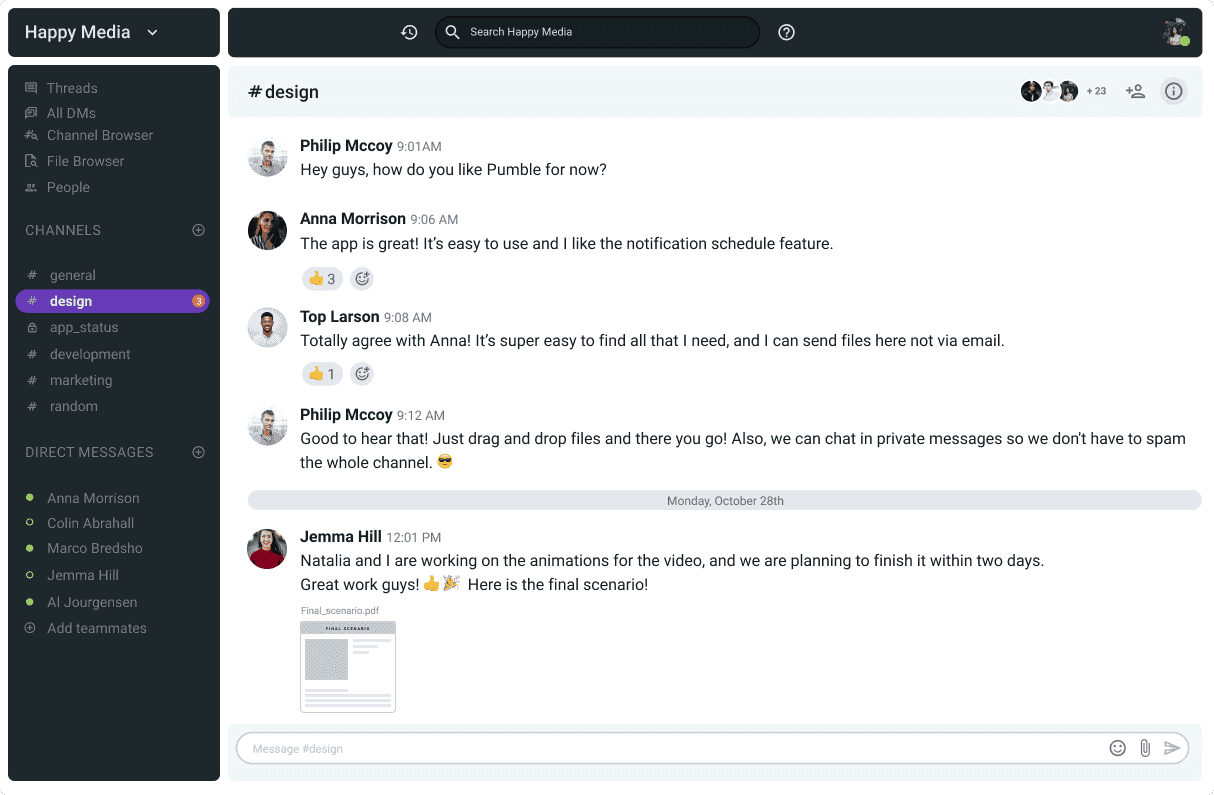
Source: pumble.com
Pumble combines work chats, file sharing, and video conferencing into a simple yet effective platform for team collaboration.
It’s a cost-effective choice for communication, with features that suit small to mid-sized teams.
With a design similar to Slack, transitioning teams would find it easy to adapt to Pumble, making it an appealing alternative.
Top Pumble features:
Channels, direct messages, and threads: Pumble provides channels, direct messages, and threads, similar to Slack. Teams considering switching to Pumble from Slack will find the setup easy to adapt.
Unlimited chat history: Like Lark, Pumble also offers unlimited chat histories, allowing teams to catch up on conversations and gain full context.
Import from Slack: Pumble allows you to export your Slack public and private channels, private messages, and users and import them into Pumble for a seamless transition.
Pros of Pumble:
Budget-friendly alternative to Slack
Fast and responsive, even with large team discussions
Includes task management and user survey features
Simple and user-friendly interface
Free starter plan with affordable paid options
Cons of Pumble:
Restricted feature set compared to more robust platforms
Primarily suited for small to medium-sized teams
Limited integrations as it’s still developing
Pricing:
Pumble has a free basic plan with various pricing plans if you need more features.
User reviews:
G2 rating: 4.5/5
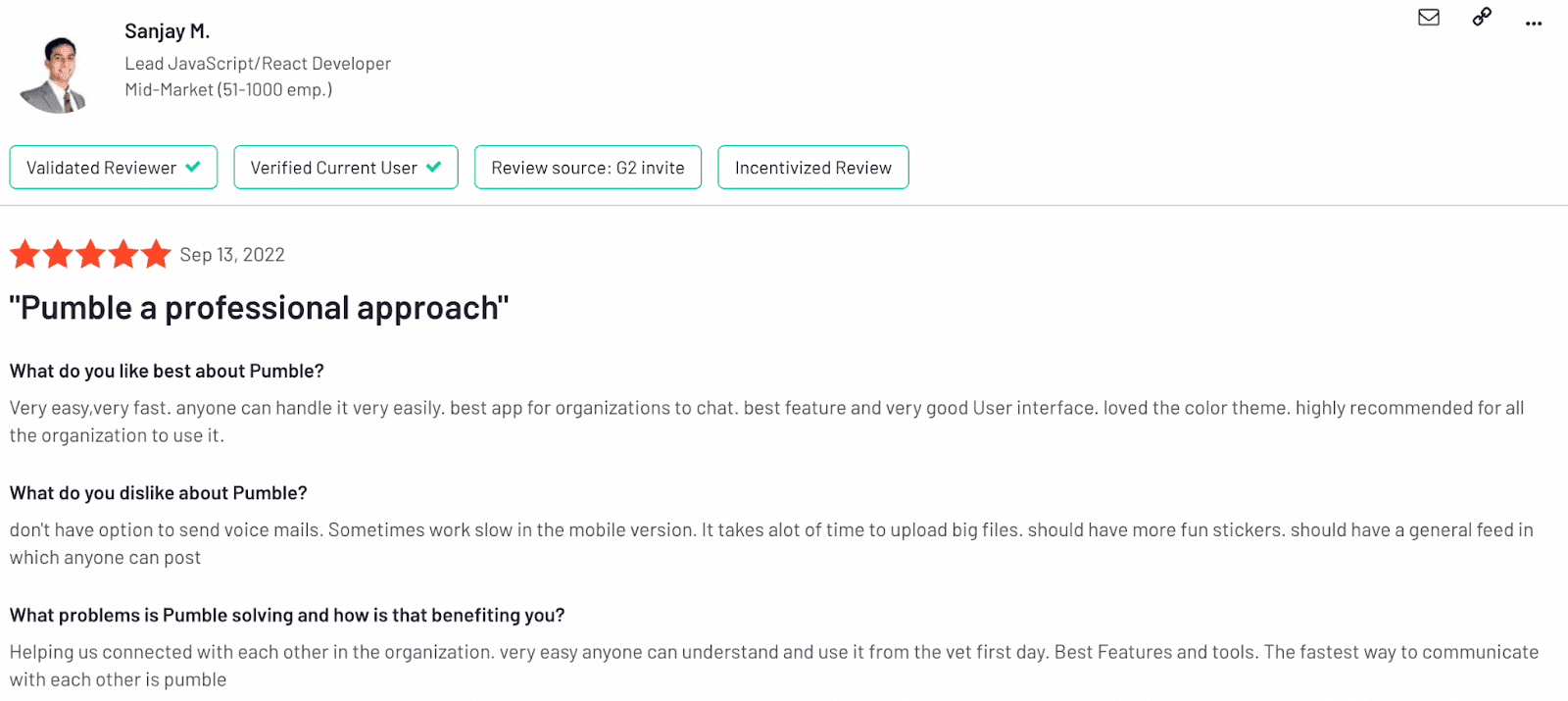
Source: g2.com
10. Flock – Best for fun and engagement

Source: flock.com
Flock prioritizes user enjoyment to boost engagement.
It uses gamified features, emoji reactions, and custom themes to create a lively team communication environment.
The idea behind this approach is to boost team morale and foster a more connected work culture.
Flock offers an interactive alternative to Slack that brings workers together in an organized format.
Top Flock features:
Channels and Direct messaging: Organized channels with separate direct messaging make it easy to organize internal conversations
Gamification: Points, badges, and levels encourage users to actively participate by promoting friendly competition and motivation
Video and audio calls: Connect face-to-face with high-quality video and voice calls within the platform
Pros of Flock:
Fun, engaging interface with customizable dashboards
Intuitive design works well for beginners
Feature-rich mobile app for on-the-go communication
Basic plan comes with all its core features
Integrated calendar functionality to streamline scheduling
Cons of Flock:
Gamified elements might not align with all professional environments
Advanced features have a steep learning curve
Fewer native integrations than more established platforms
Pricing:
Flock has a free basic plan for up to 20 users, with a paid plan at $4.50 a month.
User reviews:
G2 rating: 4.4/5
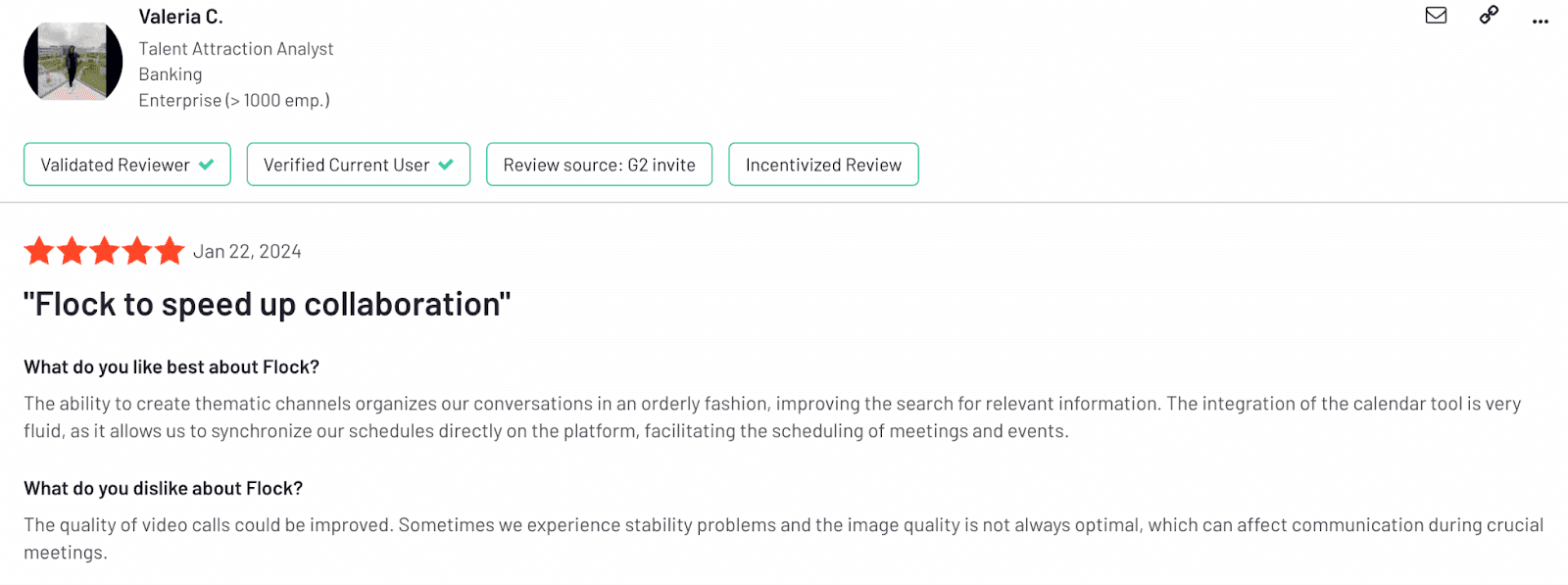
Source: g2.com
11. Ryver – Best for project communication
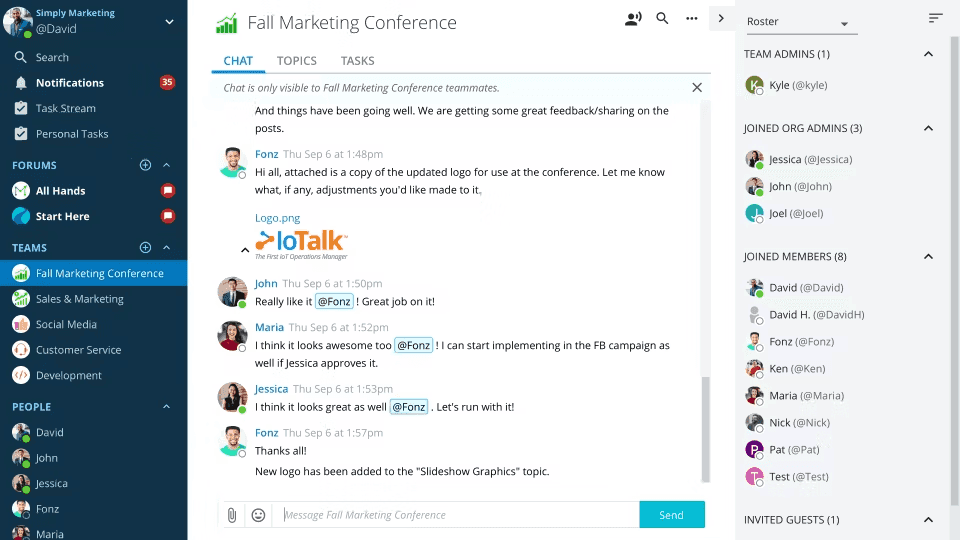
Source: softwareadvice.co.uk
Ryver helps teams manage projects by combining communication tools like chat and file sharing with built-in task management features.
This creates a centralized hub for project discussions, task coordination, and collaboration.
It works using Kanban boards, helping you visualize workflows and communicate about projects in one place.
Top Ryver features:
Kanban boards: Visualize workflows, manage tasks, and track progress in the same app as your team's communications
Real-time chat, voice, and video calls: Individual and group chat functionalities, face-to-face video conferencing, and private and group call functionalities.
File sharing: Teams can store documents and collaborate within the platform
Pros of Ryver:
Centralized project management to combine task organization and communications
Visual dashboards for easy project tracking
Several ways to communicate synchronously and asynchronously
Reporting and analytics to track communications and progress
Robust mobile app for managing team communication on-the-go
Cons of Ryver:
It’s expensive for larger teams
Not suitable for highly complex projects with intricate dependencies
Complex to set up integrations
Pricing:
There’s a free plan with limited features. Paid plans start at $34.50 a month for 12 users.
User reviews:
G2 rating: 4.4/5
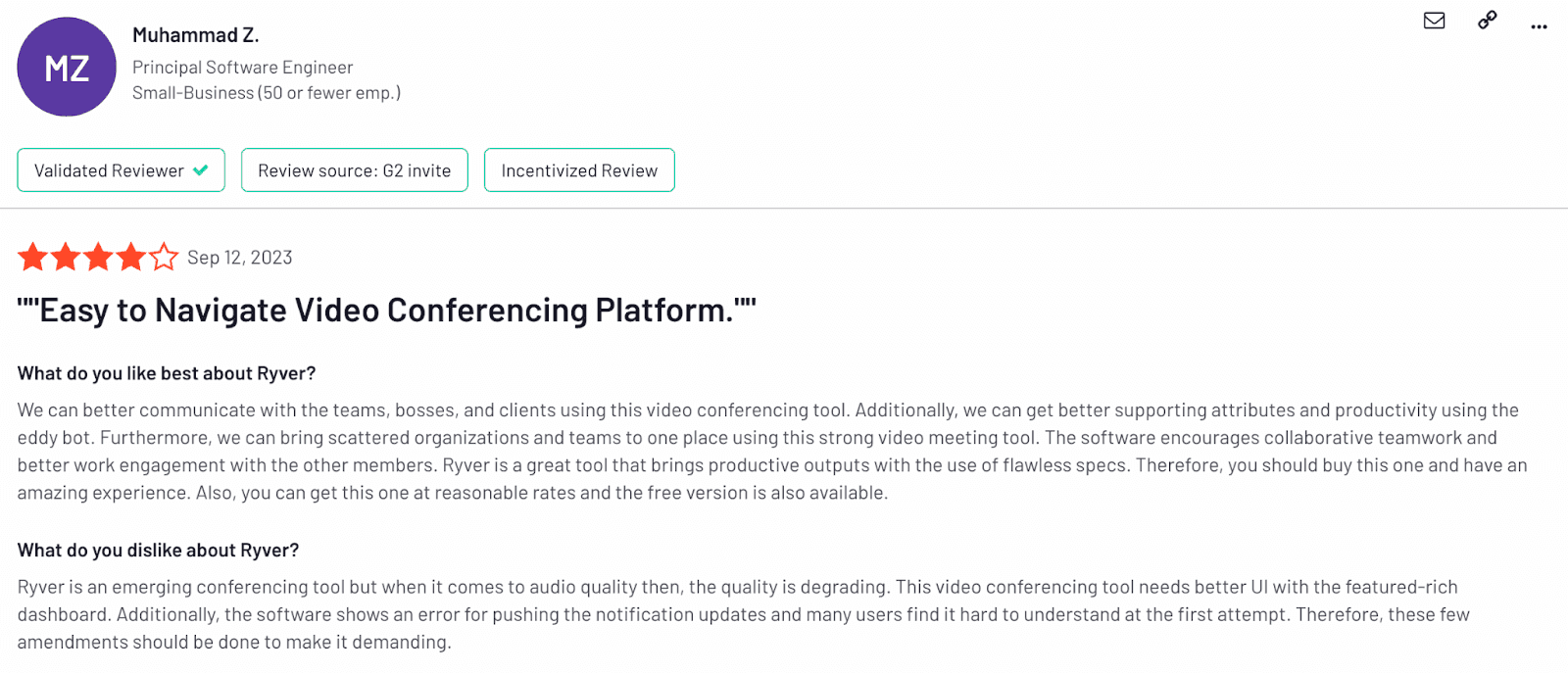
Source: g2.com
12. Twist – Best for asynchronous communication
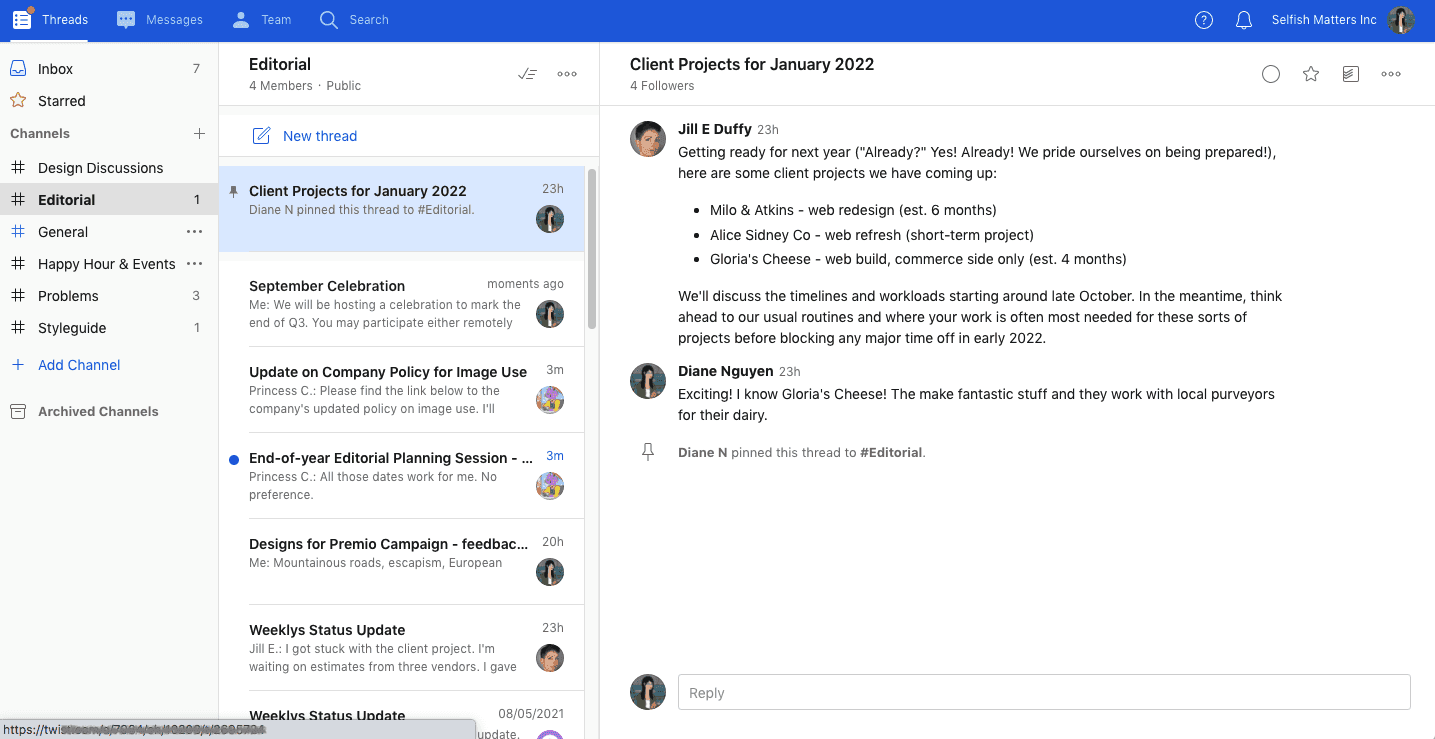
Source: uk.pcmag.com
Twist tackles the challenges of communication across different time zones and schedules.
It offers threaded conversations and well-organized channels that suit the recipients' calendars.
Its asynchronous approach allows team members to contribute and stay informed on their terms.
This fosters more focused and productive communication and reduces the overwhelming user experience with Slack.
Top Twist features:
Threaded conversations and persistent channels: Keep discussions organized while current topics stay active and accessible. This way, teams don’t have to repeat themselves.
Flexible notifications: Users can customize notification settings to maintain focus and avoid information overload and maintain focus.
Advanced search functionality: It’s easy to find past conversations and information within channels without scrolling over the chat history.
Pros of Twist:
Higher focus and less communication overload
Searchable repository streamlines knowledge sharing
Ideal for coordinating remote teams
Easy to learn, even for less tech-savvy users
Cons of Twist:
Not designed to handle instant, real-time communication
Advanced features can be complex to learn
Limited personalization options
Pricing:
Twist offers a free plan for up to 5 users. Paid plans start at $5 per user per month.
User reviews:
G2 rating: 3.9/5

Source: g2.com
Other top Slack alternatives
Here are some more options you might want to consider:
Chanty - Best for voice notes and calls: Chanty is designed to improve team productivity through high-quality messaging, video conferencing, and task management.
Element - Best for privacy: With a focus on privacy, Element provides end-to-end encrypted conversations for teams.
Zulip - Best for easy organization: Organized team chat that applies a thread model to make conversations at work cleaner and more focused.
Mattermost - Best for technical teams: Secure messaging and collaboration platform for technical teams, providing a self-sovereign infrastructure and strong access controls.
FAQs about Slack alternatives
Is there a free version of Slack?
Slack offers a free forever plan which includes unlimited users and direct messaging. However, it’s important to note that this plan includes major restrictions such as limited integrations, data exports, and minimal security features. Read more about Slack’s plans here.
Is there an open-source alternative to Slack?
Rocket.Chat, Mattermost, and Zulip are open-source solutions that include some of the same features as Slack. We recommend you test out these tools to ensure they have the features you need.
Which Slack alternatives are best for small teams or startups?
For small teams and startups, Lark is the best choice because it seamlessly combines chat, video calls, cloud storage, and project management—all in one platform, with no extra integrations required. Its free plan includes 11 built-in products and supports up to 20 users, allowing your entire team to collaborate effortlessly without needing third-party software.
Final thoughts
While there are many alternatives to choose from, Lark is the ultimate choice for teams looking to elevate their productivity and collaboration.
With Lark, you get more than just a team communication tool—you gain a sophisticated, all-in-one collaboration software that eliminates the need for multiple apps. Its intuitive interface, AI-driven tools, built-in task management, and advanced security features make it ideal for teams of all sizes, from startups to global enterprises.
Unlike Slack, Lark delivers tools like auto-translation, meeting scheduling, and 18 months worth of chat history—all within a free plan available to small teams. Whether you're searching for free Slack alternatives, a tool for small teams, or a platform designed to overcome the limitations of Slack, Lark offers unmatched value.
Get started with Lark today and transform the way your team collaborates.


